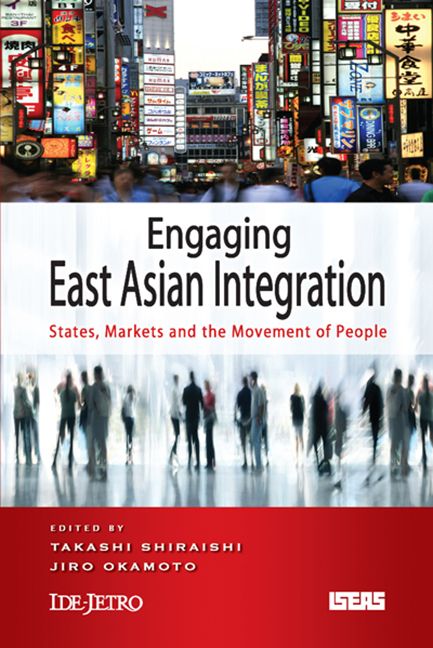Foreword
Published online by Cambridge University Press: 21 October 2015
Summary
The symposium on which this book is based was held in the darkest days of the U.S.-originated global financial crisis. In the wake of the collapse of Lehman Brothers, demands were frozen and economies with high export dependency experienced radical contraction. No one knew how long this would last and what the consequences would be.
In a time of crisis we tend to speculate on known unknowns. We knew that the U.S. market would not be in a position to pull the East Asian economies along from the demand side. The triangular trade system of the United States, China, and the rest of Asia that had evolved after the 1997–98 Asian economic crisis would have to undergo radical transformations. With U.S. demand frozen, China's exports to the United States declined, which, in turn, led to the contraction of China's imports of intermediate and capital goods from the rest of Asia including Japan, South Korea, Taiwan, and ASEAN countries. This is the reason economists and business people called for turning regional demands into “domestic demands”, in the hope that China would emerge as the market to pull the rest of Asia as well as the world out of this crisis.
Recalling the Great Depression of the 1930s, many of us were aware that hard times would breed nasty politics. Signs were there in the form of trade protectionism, currency manipulation, the maltreatment of illegal migrants, and the rise of political parties calling for policies to protect very narrowly defined “national interests”.
And yet nothing as serious as the worst-case scenario came to pass. The United States and the European Union recovered economically, and while they are a lot weaker than we hoped, we can be far more optimistic about the future now than in December 2008.
Yet two things remain. First, the transformation of East Asian triangular trade still has a long way to go. Recent IDE-JETRO research shows that China has upgraded its intermediate and capital goods production while flooding the countries in its vicinities with inexpensive final products, a move that compels Japan, South Korea, and Taiwan to upgrade their industries while posing a threat to ASEAN economies. The Indonesian Government's call for review of the ASEAN-China FTA is a sign of this increasing tension.
- Type
- Chapter
- Information
- Engaging East Asian IntegrationStates, Markets and the Movement of People, pp. vii - xPublisher: ISEAS–Yusof Ishak InstitutePrint publication year: 2012



